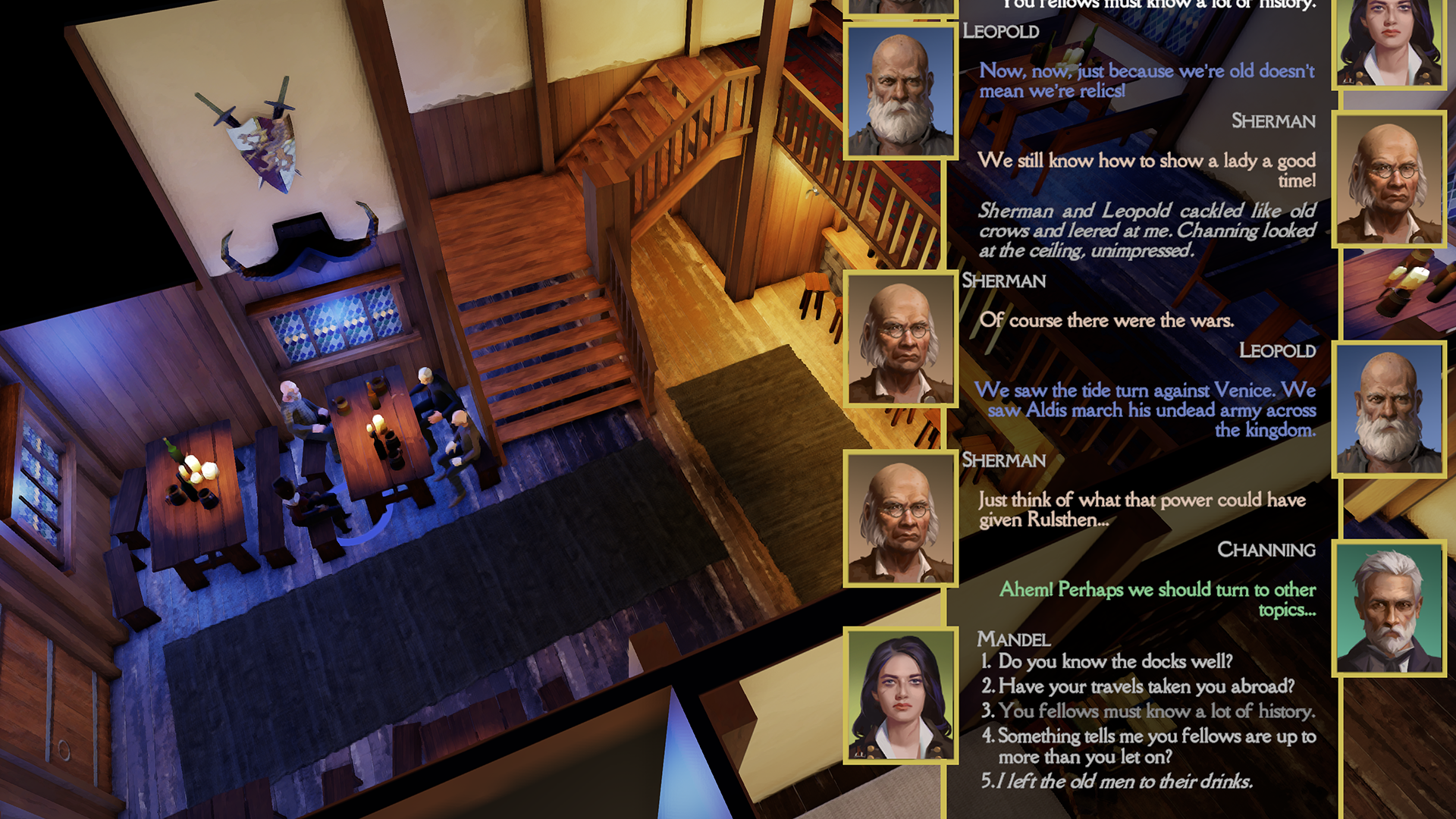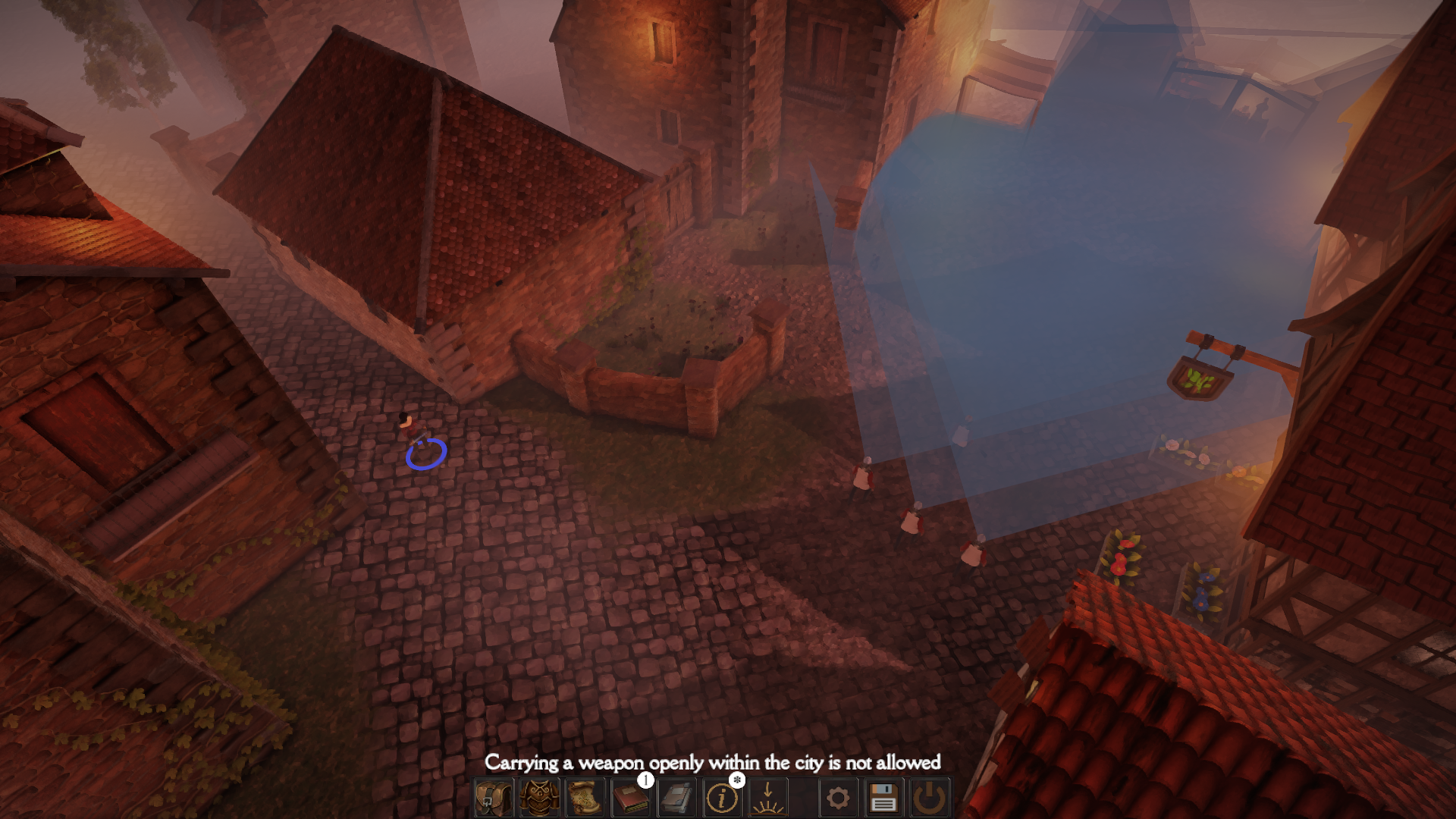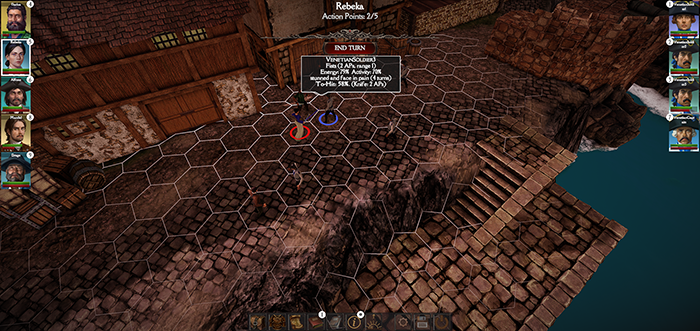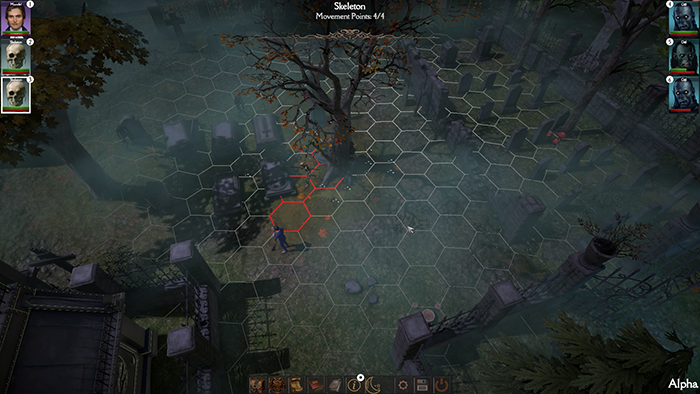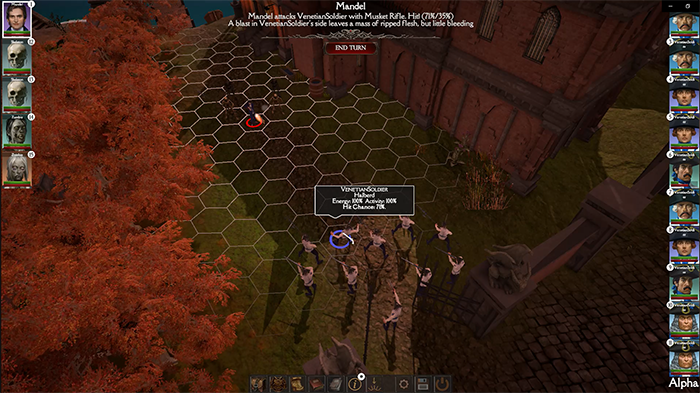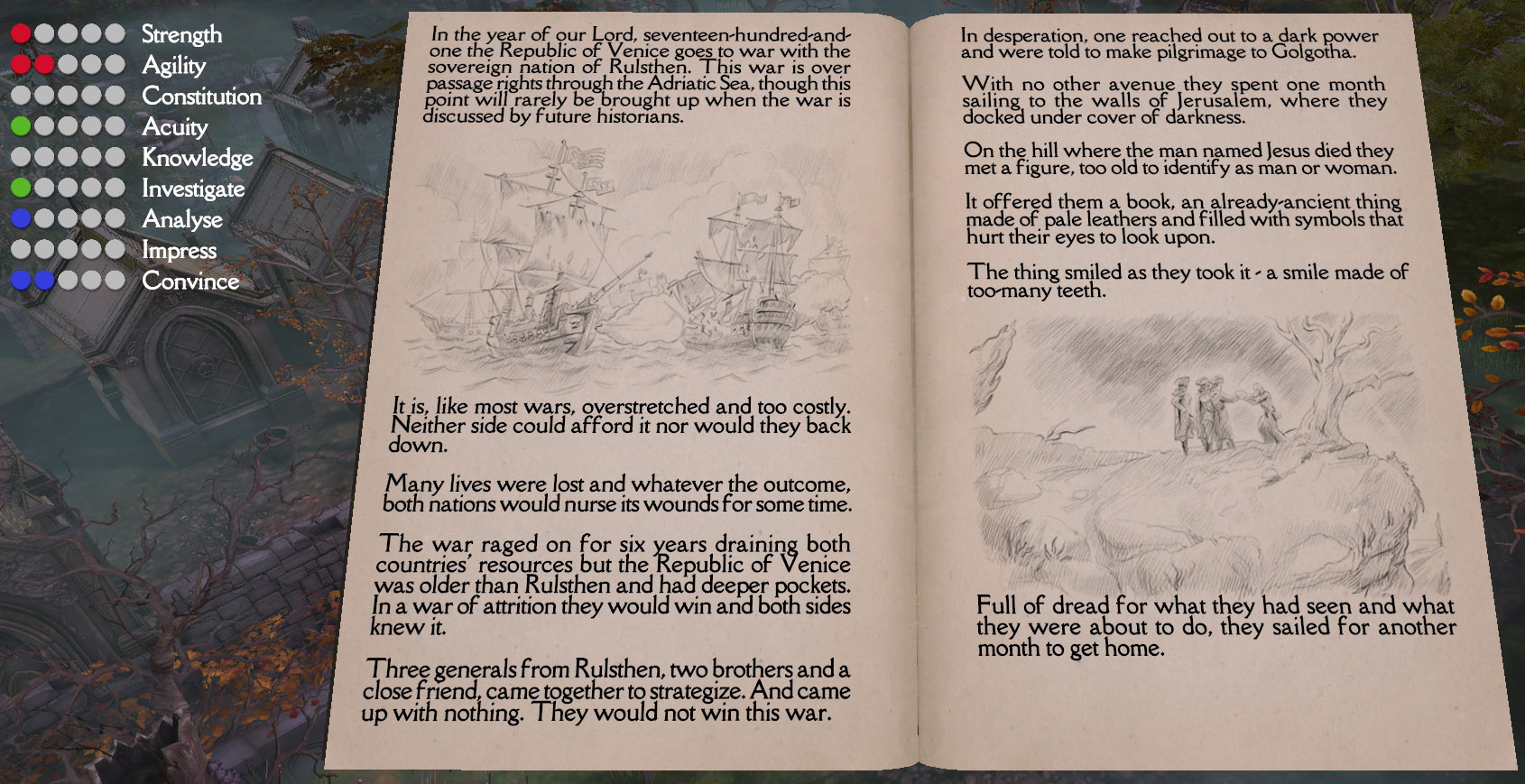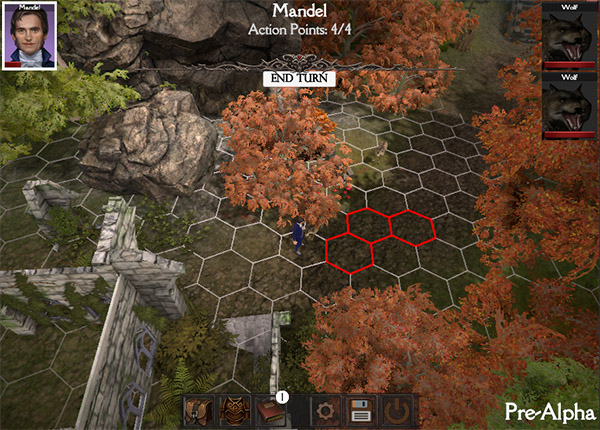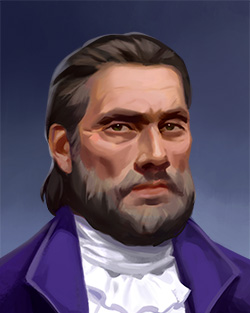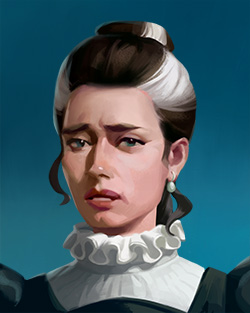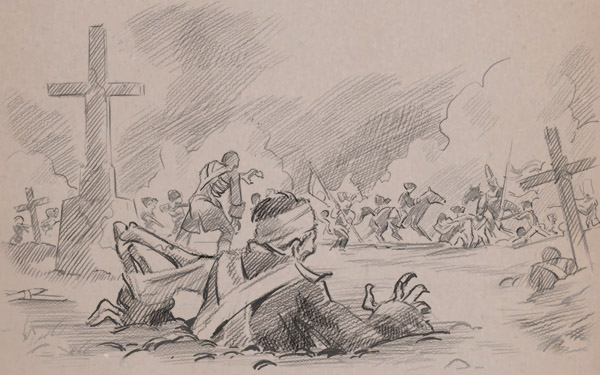[The Necromancer’s Tale] demo has had over 1500 playtesters over the past 12 months, providing lots of analytics and around 150 in-depth responses via questionnaire. We have learned what players most love about the game (the detailed world, well developed characters, and overall interactivity)- which directly led to several features being added during 2023 (e.g. wearable clothes, voice acting, and further responsiveness in the world such as a playable piano and an interactable cat).
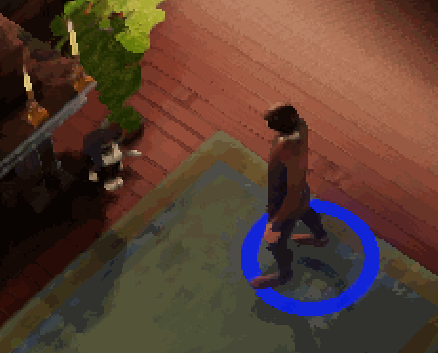
That’s right. It’s a gif of a cat. It’s about to hiss at you and run off.
We have also learned that players hope that the final game will offer a range of summonable creatures and various other necromantic battle-magic spells (in addition to the ritual magic which has always formed the core of the game). The one area that players felt a bit bland was combat.



Some powerful creatures you can enslave, and then summon to help you in battle.
The latest demo shows off our improved combat system, adding Mana, Battle Magic Spells, and Activity points carry-over. We have also made a more friendly in-game tips system during combat and generally improved the combat UX.
Mana: this is the game’s 10th skill, adding arcane ability to the physical, social, and mental emphasis of the existing skills. Mana will be built up in various ways as you progress through the game, either directly or through the wielding of magical artefacts. Mana has become a core skill which is now needed in order to activate undead minions in battle, as well as to cast other spells.
Battle-magic spells: we have 10 battle spells planned in total, but for now the demo offers 3. Each spell costs Mana, Action Points, and (sometimes) drains your Energy.
- “Activate Minion” is required in order to move a minion during the current combat round. Adding this requirement makes undead minions fundamentally different to your human allies in combat, adding a tactical dimension to their positioning and activation.
- “Death Focus” allows you to commune with the Realm of the Dead and gain a temporary Mana boost. This is a useful spell when you’re in a tight spot, perhaps during a combat round in which the randomised winds of magic are blowing only weakly.
- “Chilling Mist” is the first of two planned area-effect spells. This one invokes a magical mist which drains the action points of all mortal creatures in the affected area. It adds more tactical nuance to your control of the battle-field’s space.
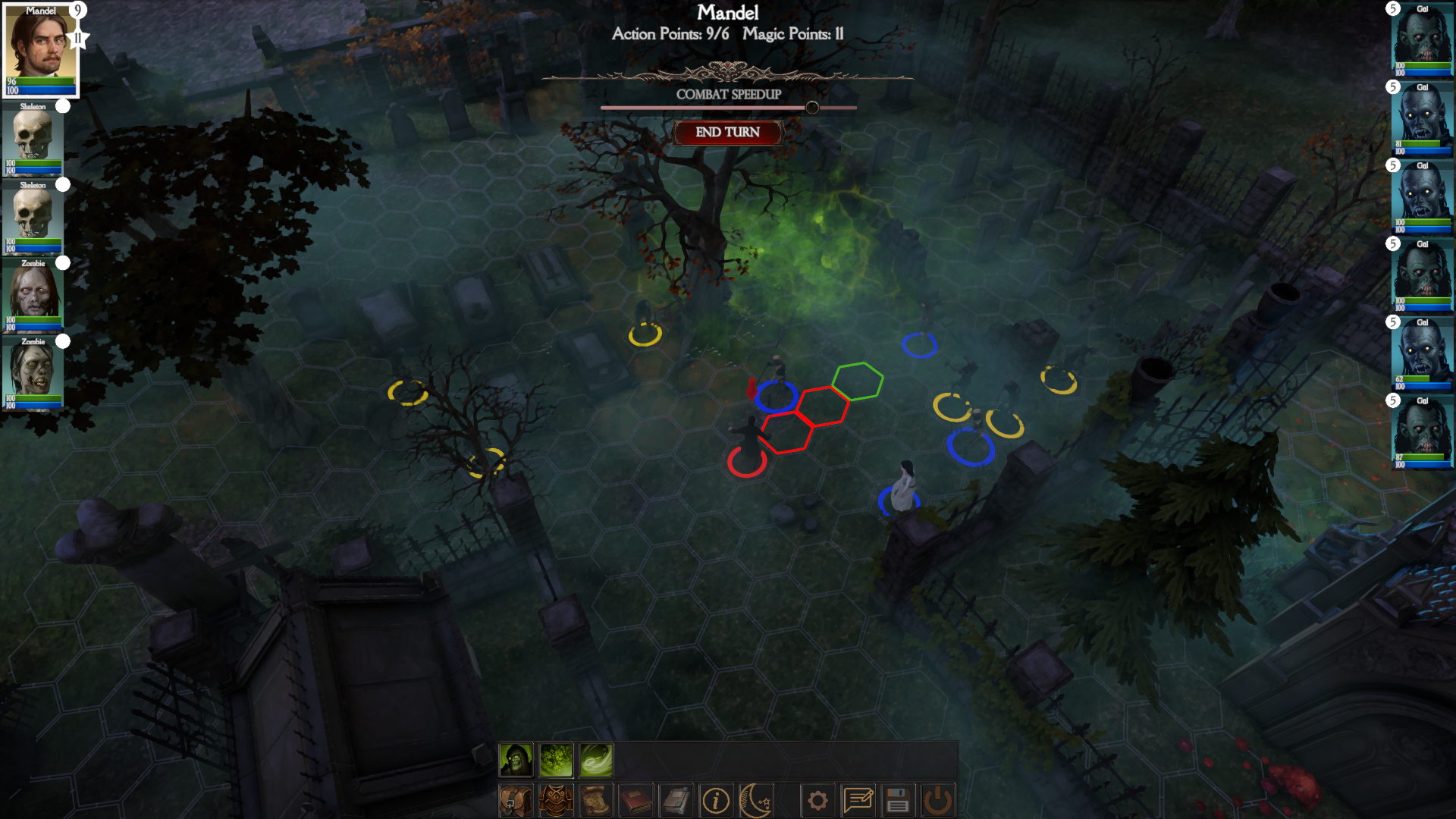
From next Thursday (Dec 7th) the game is going into its second round of playtesting on the excellent [G.Round platform]. If you’re interested in being involved, for The Necromancer’s Tale or other games, please check them out!


